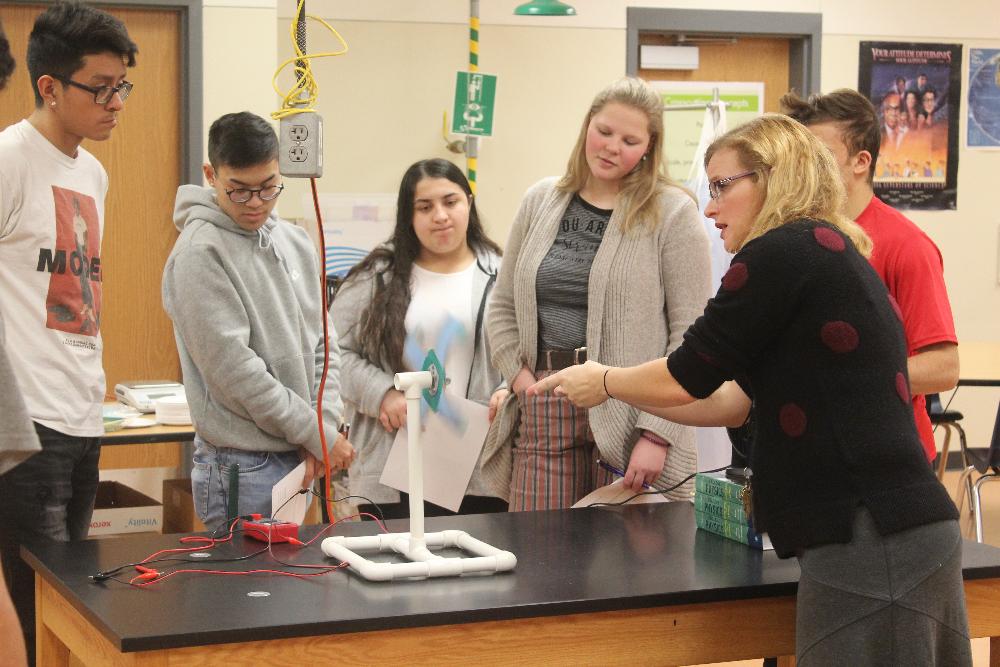LPS, LES partnership powers valuable physics lesson
January 29, 2020
There are nearly 900 wind turbines operating in Nebraska, providing more than 14 percent of the state’s energy. Thanks to a partnership with Lincoln Electric System (LES), a group of physics students at Lincoln North Star High School recently learned firsthand what it takes for a turbine to produce all of that valuable energy.
LES provided physics teacher Karen Covil and her students all of the supplies necessary to construct and test energy produced by miniature turbines. Students used supplies such as paper plates, compact discs, construction paper and masking tape to create blades they attached to a turbine roughly 12 inches tall.
Once assembled, they pointed a small fan at the turbine, crossed their fingers and waited for it to spin. If successful, they measured the energy output with a small voltage meter.
Covil said they have been studying energy transformation, including how wind energy is converted into electrical energy. She said the exercise was an opportunity for students to apply physics they’ve been learning to the real world, as well as improve their STEM skills.
“I would like them to take away that wind energy is an important alternative energy source and it might be something that we use more of in the future,” Covli said, “and also that we’re always looking to increase our efficiency with equipment.”
Senior Hannah Amberg loved the hands-on nature of the lesson.
“I think it’s so much fun. It’s one thing to learn about it and then on the interstate see those huge turbines, but with this you actually get to learn about it and actually see through trial and error if it’s actually going to work,” said Amberg, whose blades were a success.
The origin of the wind turbine lesson dates back to last summer, when Covil was one of nearly 20 middle and high school science teachers from Lincoln Public Schools who joined LES for the first-ever emPowering Energy Educators workshop. The workshop was a pilot, designed to provide teachers with the tools to excite and inspire students about energy generation and supply them with real-world industry examples and data. It also sought to equip those in attendance with an understanding of career paths in the industry to help guide more students looking to pursue careers in energy.
“If we want teachers to excite and inspire students about real-world applications, in many cases we need these partnerships to provide exposure and immersion,” said James Blake, LPS K-12 science curriculum specialist. “I’m excited LPS has teachers like Karen that benefit from her connections with LES.”
Blake is co-chairing a citywide networking group, the Lincoln STEM Ecosystem (LNKSE), with Bryan Seck from Lincoln Partnership for Economic Development and Prosper Lincoln. LNKSE is a group of volunteers from all sectors of the community collaborating to build more of these real-world connections that teachers and businesses can utilize. Find out more about the efforts of LNKSE and get involved at www.lnkse.org or follow the group on Twitter at @lnkse.
Published: January 29, 2020, Updated: January 29, 2020

"It’s one thing to learn about it and then on the interstate see those huge turbines, but with this you actually get to learn about it and actually see through trial and error if it’s actually going to work."
Hannah Amberg, senior at North Star High School
